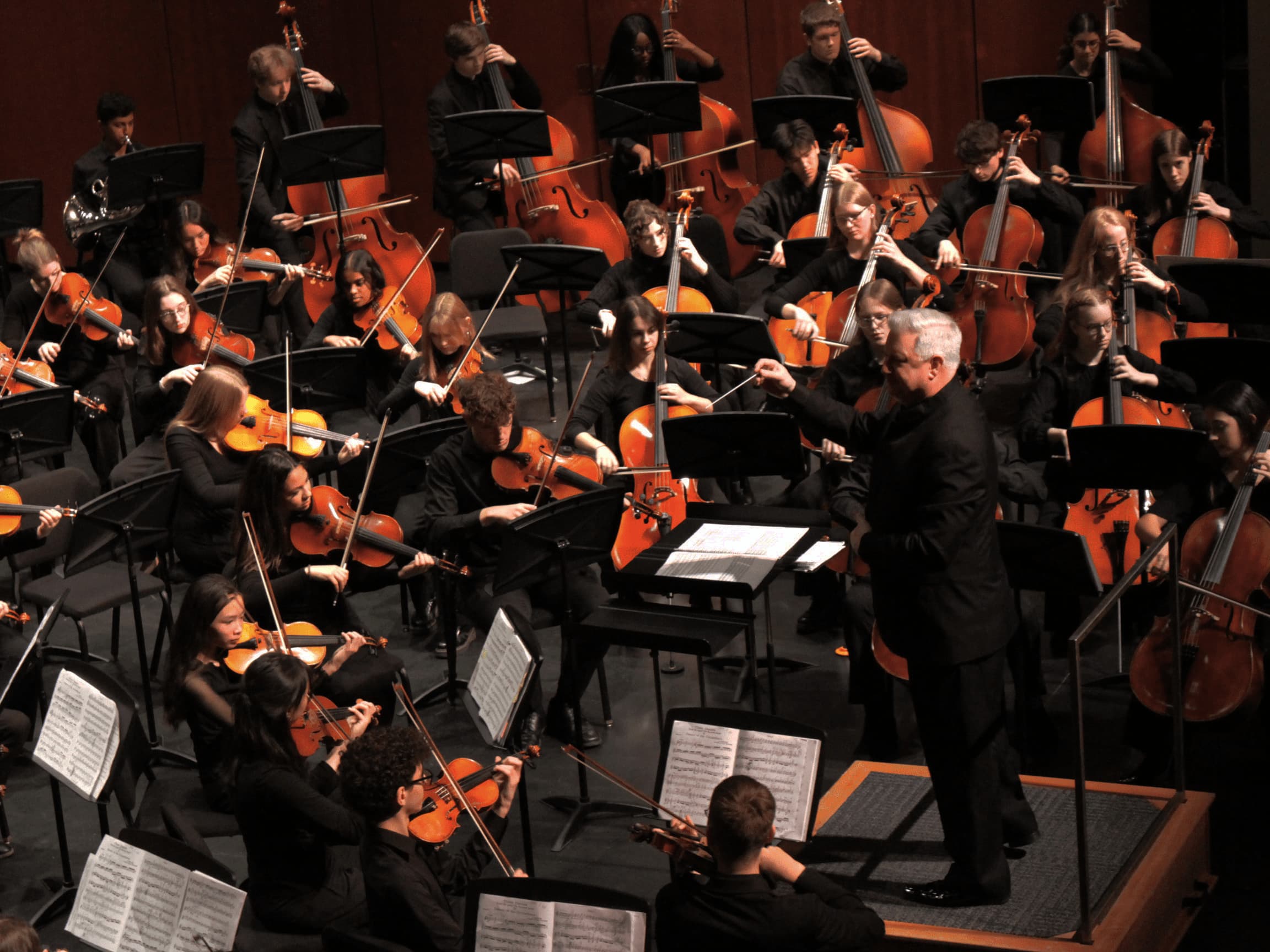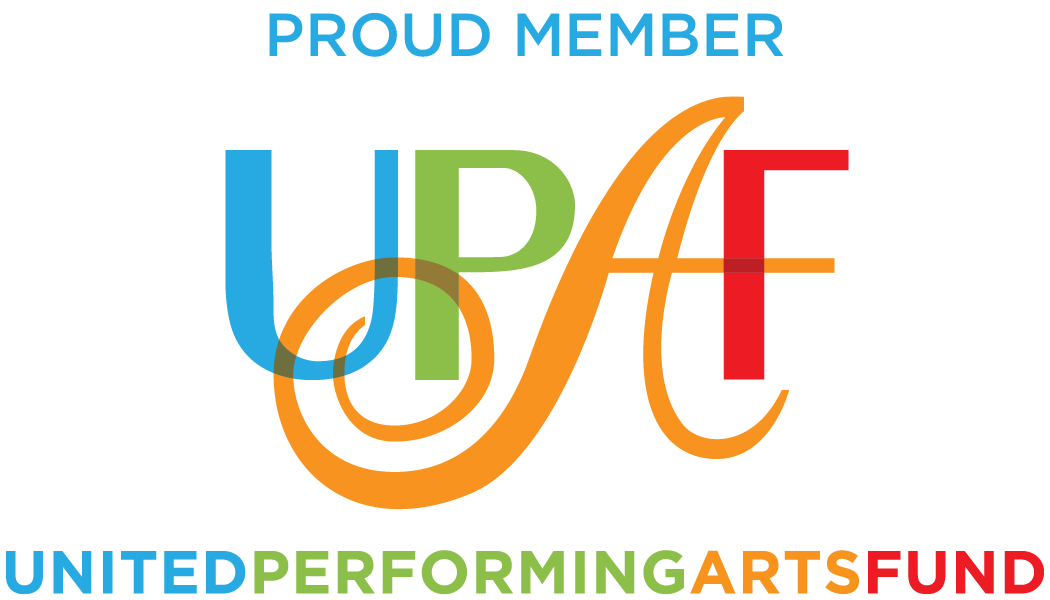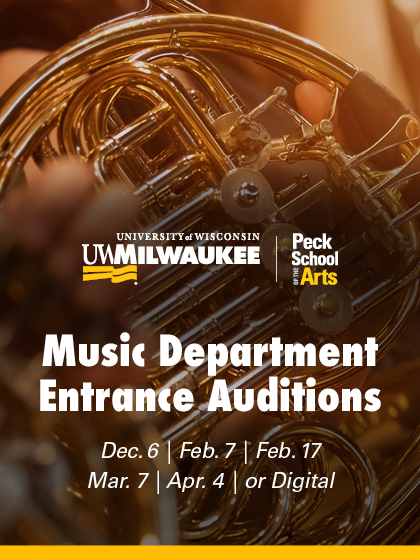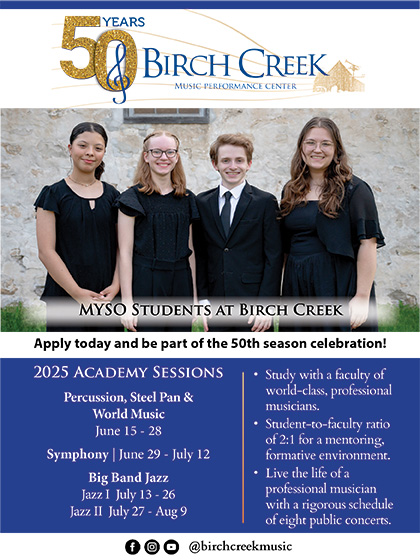
Founders Concert: Italian Maestros and an American Queen
featuring the Senior Symphony
Carter Simmons, Artistic and Music Director
Saturday, February 22, 2025 | 1:00 pm
Bradley Symphony Center
Giuseppe Verdi (1813-1901)
“Ballabile” from Act III, Otello
Pietro Mascagni (1863-1945)
“Intermezzo” from L’Amico Fritz
Ottorino Respighi (1879-1936)
Fountains of Rome
- La fontana di Valle Guilia all’alba
- La fontana del Tritone a mattino
- La fontana de Trevi al meriggio
- La fontana di Villa Medici al tramonto
Intermission
Florence B. Price (1887-1953)
Symphony No. 3 in C Minor
- Andante – Allegro
- Andante ma non troppo
- Juba. Allegro
- Scherzo. Finale. Allegro
VIOLIN
Concertmasters listed in alphabetical order
Benyamin Kim, Concertmaster
Magdalena Masur, Concertmaster
Henry Snavely, Concertmaster
Sal Stein, Concertmaster
Jayanth Suthan, Concertmaster
Colette Wiering, Concertmaster
Christianna Ebel, Assistant Concertmaster
Anna Lena Derocher
Nishanth Suthan
Alexander Chen
Leif Young
Yiwen Ma
Emilia Sato
Sophia Collins
Ariana Augustine
Isabella Krynicka
Mayouel Viviano Terando
Dana Kim
Samuel Botshtein
Lexi Mabini
Simon Doerr
Giovanna Hughes
Logan Gleesing
Andrew Behring
Ruthee Rosploch
Evan Chirillo
Avana Kelly
Bianca Enriquez
Joy Zhao
Chloe Chen
Sarah Harkavy
Cameron Coraggio
Bode Li
Akshay Bharathwaj
Alex Holzman
Elisabeth Hillmann
Soren Ellingstad
Yessica Rodriguez
Laura Tauzell
Vera LeFort
Kayla Cooney
Ellasyn Korb
Ishani Nayak
Rosy Kojis
VIOLA
Spencer Laga, Principal
Violet Lucier, Principal
Alana Perez, Principal
Haley Burns, Principal
Eleanor Froelich
Jennifer Raychel
Amber Yi
Cassidy Quandt
Hrishikesh Srivathsan
Samantha Stundtner
Dhruv Venkateswaran
Lucy Hamann
CELLO
Ava Larsen, Principal
Adela Ramirez, Principal
Gabrielle Peck, Principal
Luke Field, Principal
Maryveth Ochoa
Rebecca DeBoer
Luka Vater
Reagan Laws
Rylee Stelpflug
Maya Thomure
Phoebe Panozzo
Maggie Barrett
Anderson Brewer
Josiah Chu
Abraham Albiter
Brandon Liao
BASS
Gavriilia Fyrogeni, Principal
Alexander Matusiak, Assistant Principal
Lauren Gooden
Dmitriy Levit
Grant Atkinson
Ean Gergetz
Oscar Thompson
Harp
Emmaline Strong
PIANO
Jeannie Yu
FLUTE
Maribel Cortez
Johana Kim
Lucy Merrill
Lilly Talbot
Jane Tretheway
PICCOLO
Maribel Cortez
Lucy Merrill
Jane Tretheway
OBOE
Claire Fifarek
Kelly Li
Lydia Morency
ENGLISH HORN
Claire Fifarek
CLARINET
Lilly Beane
Hanh Bui
Rayna Kavalauskas
Madeline Makarewicz
BASS CLARINET
Madeline Makarewicz
BASSOON
Gavin Hansen
Faith Weigand
Andie Wisniewski
FRENCH HORN
Shaurya Bansal
Eli Drews
Rachel Jacobson
Meera Rao
TRUMPET
Sean Gaez
Max Marshal
Redding Mortwedt
Katharine Wilhelm
TROMBONE
Jonas Daso
Emmeline Erickson
Matias Krammer
Owen Ruck
TUBA
Lane Wendorf
TIMPANI and PERCUSSION
Paddy Foy
Kyler Katanik
Rachel Shatzer
Nicolas Strichartz
Woodwind, Brass, and Percussion musicians listed in alphabetical order
Giuseppe Verdi
b. October 9 or 10, 1813; Roncole | d. January 27, 1901; Milan
Ballet Music (Ballabile) from the Opera Otello
After the Herculean effort of creating Aida (1870-71), Verdi went into a self-imposed retirement from the “slavery” of writing opera. Despite fervent urgings of friends and colleagues, he refused to cater to the fickle whims of an operatic audience that was largely enthralled with the works of Wagner. At last, Verdi was generally able to do what he wanted: attending concerts and operas, revising older works, writing some smaller vocal compositions and, of course, composing his monumental Requiem.
Following a performance of the Requiem in Milan during the early summer of 1879, Verdi got into a stimulating dinner conversation with his publisher, Giulio Ricordi, about the relationship of music and the works of Shakespeare. (Verdi had long been interested in the musical possibilities of Shakespeare’s 1604 play, Othello, The Moor of Venice. The tale originated in a true incident involving one Giacomo Moro, who murdered his wife in a fit of jealousy. Shakespeare apparently mistook the man’s name for an indication of race, thus he became The Moor of Venice.) Ricordi, noting that the discussion of Othello brought a gleam to the composer's eye, also mentioned casually the talents of the younger composer-librettist, Arrigo Boito. Most widely known at that time as the composer of the opera Mefistofele, Boito (1842-1918) was a brilliantly creative type who had also made his mark as a poet, critic and librettist. The two were brought together as potential collaborators—the project progressed with due haste to its first performance at Milan's La Scala in February of 1887. The success of Otello was followed in 1893 by Verdi’s last operatic effort, again in collaboration with Boito, Shakespeare’s comedy, Falstaff.
A year after Falstaff, in 1894, Verdi wrote an obligatory ballet for a production of Otello in Paris. Although Verdi considered the French insistence upon a ballet scene in every opera to be “an artistic monstrosity,” Verdi dutifully created six minutes of music for Turkish slaves, Venetian youths, and “beautiful young Greek girls.” The sections of his ballet are entitled "Arab Song," "Invocation to Allah," "Greek Dance," "La Muranese," and a concluding "War Song."
by Roger Ruggeri © 2025
Pietro Mascagni
b. December 7, 1863; Livorno | d. August 2, 1945; Rome
Intermezzo from L’Amico Fritz
The life of Mascagni forms a cautionary tale about the perils of success. An indifferent music student at the Milan Conservatory, Mascagni quit school after two years and took a position as a double bass player at the Teatro Dal Verme in Milan. Soon thereafter, he toured as a conductor of third-rate operetta companies; tired of the vagrant life after several seasons, he married and settled down as a music teacher in Cerignola, Puglia.
Composing cantatas and operas during this period, he was considering the possibility of entering the fourth act of his Guglielmo Ratcliff in a contest for one-act operas. While he was trying to decide, his wife entered Cavalleria rusticana without his knowledge. The work was judged to be one of three winners and was produced in Rome on May 17, 1890. It was an instant popular success; within a year, Mascagni gained world fame.
In the following year, Mascagni wrote the three-act L’amico Fritz, of which the dramatic and lyric Intermezzo, remains a favorite concert work. Based upon an 1864 French novel by Emile Erckmann and Alexandre Chatrian, the three-act opera tells of an involved relationship between Fritz, a wealthy landowner and the daughter of one of his tenant farmers.
Unfortunately, few of his subsequent thirteen operas ever matched the success of Cavalleria…. He later lamented: “It is a pity I wrote Cavalleria first. I was crowned before I became king.” His career ebbed to a new low when he allowed himself to become a figurehead in Mussolini’s Fascist regime; utterly disillusioned, he died in a disreputable hotel room.
by Roger Ruggeri © 2025
Ottorino Respighi
b. July 9; Bologna | d. April 18, 1936; Rome
Symphonic Poem, The Fountains of Rome
Respighi’s love for Rome was the basis for the creation of his most famous orchestral compositions, works in which he celebrates the city’s fountains, pines, church windows, Botticelli paintings and festivals. The first of these, written in 1916, was The Fountains of Rome. His wife commented in his biography: “It is certain that the Fontane were neither born of a literary program, as some like to maintain, nor to describe and illustrate four of the most beautiful fountains in Rome, but only to satisfy a spiritual need…”
Describing his work, Respighi writes: “In this symphonic poem the composer has endeavored to give expression to the sentiments and vision suggested to him by four of Rome’s fountains, contemplated at the hour in which their character is most in harmony with the surrounding landscape, or in which their beauty appears most impressive to the observer.
“The first part of the poem, inspired by the Fountain of Valle Gullia, depicts a pastoral landscape; droves of cattle pass and disappear in the fresh, damp mists of the Roman dawn.
“A sudden loud and insistent blast of horns above the trills of the whole orchestra introduces the second part, "The Triton Fountain." It is like a joyous call, summoning troops of naiads and tritons, who come running up pursuing each other and mingling in a frenzied dance between the jets of water.
“Next there appears a solemn theme, borne on the undulations of the orchestra. It is The Fountain of Trevi at midday. The solemn theme, passing from the wood to the brass instruments, assumes a triumphal character. Trumpets peal, across the radiant surface of the water there passes Neptune’s chariot, drawn by sea horses and followed by a train of sirens and tritons. The procession then vanishes, while faint trumpet blasts resound in the distance.
“The fourth part, the Villa Medici Fountain, is announced by a sad theme, which rises above a subdued warbling. It is the nostalgic hour of sunset, the air is full of the sound of tolling bells, birds twittering, leaves rustling. Then all dies peacefully into the silence of the night.”
by Roger Ruggeri © 2025
Florence B. Price
b. April 9, 1887; Little Rock, Arkansas | d. June 3, 1953; Chicago, Illinois
Symphony No. 3 in C Minor
Florence Price’s Symphony No. 3 in C Minor is a powerful testament to her artistic vision and her ability to bridge classical traditions with the musical idioms of African American culture. Composed in 1940, this symphony reflects Price’s resilience and creativity in a time when opportunities for African American women in classical music were exceedingly rare. Price herself described her mission as one of expressing her identity: “I have two handicaps… those of sex and race. I am a woman; and I have some Negro blood in my veins. Knowing the worst, I would like to think the best.”
Commissioned by the Federal Music Project of the Works Progress Administration (WPA), the symphony is a product of both Price’s artistic maturity and the sociopolitical challenges of the Great Depression. The WPA’s support provided a rare opportunity for Price to focus on her compositional craft, and Symphony No. 3 emerged as a deeply personal yet universally resonant work.
I. Andante – Allegro
The first movement opens with a solemn Andante, its dark, brooding chords establishing a mood of introspection. As the tempo transitions to Allegro, Price introduces themes that exude strength and optimism, rooted in the classical sonata-allegro form. The late musicologist Rae Linda Brown, one of the foremost experts on Florence Price’s work, notes that Price’s symphonic writing is characterized by “a seamless integration of European forms with the rhythms, melodies, and harmonies derived from the African American experience.”
The movement’s thematic material alternates between lyrical string passages and bold brass fanfares. The use of rich harmonic textures and syncopated rhythms creates an engaging narrative, embodying the balance of struggle and triumph—a recurring theme throughout the symphony.
II. Andante ma non troppo
The second movement offers a moment of reflection, often compared to a spiritual or hymn. This lyrical Andante evokes a sense of prayerful meditation, drawing on the melodic and harmonic language of African American spirituals. The woodwinds and strings work together to create a warm, contemplative soundscape.
In a contemporary review of Price’s work, the Chicago Daily News described her music as “a beautiful expression of her Southern background, full of the flavor of the folk songs and spirituals of the Negro people.” This movement exemplifies that description, highlighting Price’s ability to evoke deep emotional resonance through simplicity and sincerity.
III. Juba: Allegro
The third movement, "Juba Dance," is perhaps the most distinctive section of the symphony. The juba, a traditional African American dance originating during the era of slavery, is characterized by its rhythmic drive and percussive elements. Price translates this folk tradition into orchestral terms, creating a lively scherzo infused with syncopation and playful energy.
Musicologist Douglas Shadle describes the "Juba Dance" as “a bold assertion of African American cultural pride within a traditionally European symphonic structure.” The pizzicato strings, vibrant woodwind melodies, and jaunty rhythms create a jubilant and unmistakably American character. This movement showcases Price’s ability to celebrate her heritage while pushing the boundaries of the symphonic tradition.
IV. Finale: Presto
The symphony concludes with a thrilling Presto that captures the essence of momentum and determination. The rapid, swirling theme introduced by the strings is later taken up by the full orchestra, building toward a triumphant and dramatic conclusion. Price employs bold brass passages, sweeping string lines, and dynamic contrasts to drive the music forward with unrelenting energy.
Scholars have noted the cyclical nature of the symphony, with the triumphant finale serving as a resolution to the earlier movements’ tensions. Rae Linda Brown writes, “In the Symphony No. 3, Price reconciles the trials of her heritage with the optimism of the American spirit, creating a work that speaks across boundaries of time and place.”
Legacy and Reception
Florence Price’s Symphony No. 3 is a landmark in American classical music, reflecting both her individual genius and the broader cultural currents of her time. Price’s ability to integrate African American folk traditions into the classical idiom made her a trailblazer, paving the way for future generations of composers.
At the time of its composition, Price’s work was praised for its originality and emotional depth. A 1940 review in the New York Times called her music “richly imaginative and deeply moving,” while contemporary scholars have emphasized its significance in redefining the American symphonic tradition.
Today, Symphony No. 3 is celebrated not only as a masterwork of 20th-century orchestral music but also as a vital cultural artifact that speaks to the resilience and creativity of Florence Price as an artist and as a voice for her community. In the words of Price herself, “What a great privilege it is to be able to speak to the public through music.”
We are grateful to these teaching artists who have worked with the orchestra for this concert:
- Frank Almond, Johnston Family Artist-in-Residence
- Alex Ayers
- Nicole Gabriel, Music Librarian
- Paul Hauer, Senior Symphony String Advisor
- Amanda Koch
- Ji-Yeon Lee
- Jon McCullough-Benner
- Kevin Pearl
- Erin Pipal
- Don Sipe, Brass Studies Director
- Tobie Wilkinson
- Adrien Zitoun
Donations to MYSO are the crucial funding source that allow us to nurture, challenge, and inspire young minds, profoundly changing lives and our community for the better. We are tremendously grateful for these important gifts.
This list recognizes gifts of $250 or more that were received from July 1, 2024, through January 15, 2025. We encourage you to contact Maria Fuller, Donor Experience Coordinator, at 414-267-2958, with questions or corrections—or to learn how to make a much-appreciated gift to MYSO.
Energico ($300,000+)
Anthony Petullo
United Performing Arts Fund

Maestoso ($20,000 - $99,999)
Anonymous
Laura and Mike Arnow
Bader Philanthropies
Tim & Sue Frautschi
Harri Hoffmann Family Foundation
Milwaukee Recreation Partnership for the Arts and Humanities
National Endowment for the Arts
The Richard and Ethel Herzfeld Foundation
The ROS Foundation
Steinway Society of Milwaukee, Inc.
![]()

Con Fuoco ($10,000 - $19,999)
Anon Charitable Trust
Charles D. Jacobus Family Foundation
Curt and Sue Culver
Digicorp, Inc.
Jeffrey Edelstein
James and Andrea Emling
Jill & George Fahr
Forest County Potawatomi Community
The Frank and Lucille Puncer Foundation
Frank L. Weyenberg Charitable Trust
Greater Milwaukee Foundation - Adelaide F. Banaszynski Memorial Fund
Jerome and Dorothy Holz Family Foundation
Krause Family Foundation, Inc.
Erik and Carol Moeser
Peck Foundation, Milwaukee LTD
William and Janice Godfrey Family Foundation Trust
U.S. Bank Foundation
Vivace ($5,000 to $9,999)
Anonymous (2)
Anthony Petullo Foundation, Inc.
Bobbi and Jim Caraway
Mr. and Mrs. Anthony Consiglio
Francie Luke Silverman Foundation
The Frieda and William Hunt Memorial Trust
Greater Milwaukee Foundation - Margaret E. Sheehan Memorial Fund
Michael and Jennifer Hansen
Joanne W. Hulce & Susan Hulce Cerletty
Jane Bradley Pettit Foundation
Ted and Mary Kellner
Laskin Family Foundation
Maihaugen Foundation
Gerald and Elaine Mainman
Sharon McIntosh
Mike and Lisa Miksich
Northwestern Mutual Foundation
PNC Foundation
Volo Consulting, LLC
Don and Kate Wilson
Zilber Family Foundation
Animato ($2,500 - $4,999)
Tino & Penny Arvanetes
Brian and Laurel Bear, MD
Kris & Ken Best
John and Marilyn Breidster
Anthony and Andrea Bryant
Joe and Lisamarie Collins
City of Milwaukee Arts Board
Croen Foundation, Inc.
Davidson and Harley Fund, Inc.
Dal and Jackie Drummer
Dorothy Inbusch Foundation, Inc
Linda Edelstein
Erik and Vanessa Eisenmann
Elmbrook Rotary Foundation, Inc.
Albert and Storm Elser
Ernest and Sally Micek Family Foundation
Friends Of Kayla
Lisa A. Froemming
Greater Milwaukee Foundation - Dyar Fund
Greater Milwaukee Foundation - Milwaukee Music Scholarship Fund
Green Bay Packers Foundation
David and Margarete Harvey
Hill Family Charitable Fund
Judith A. Keyes Family Fund
Constance Kling
Christine Krueger
Mary Lacharite
Mark and Julie Steinhafel Family Fund
The Michael Van Handel Foundation
Craig & Mary Robyn Peotter
Robert W. Baird Inc.
Stephen Scheil
Settlers Club of Wisconsin, Inc.
Jason and Monica Stevenson
Richard and Susi Stoll
Lauren Vollrath
Weiss Family Foundation
Elizabeth Yewer
Cantabile ($1,000 - $2,499)
Abbot Charitable Foundation
Helmut and Sandra Ammon
Anonymous
Veronica Ariens
Barry Axelrod and Sigrid Dynek
Maribeli & Luis Ayala
Baird Foundation, Inc.
Michael & Joanne Barndt
Jean Basler
Jennifer Chang
Bob Coletti and Karen Hung
Linda Czestler
Nancy Debbink and Carol Tsao
Brian and Janet Enters
Forte Services, LLC
Giacobassi Family Fund
Susan Gnewuch
John and Tameica Greene Jr.
Gustav and Gladys Kindt Foundation
Heil Family Foundation
HH Camp Foundation
John and Marci Hunzinger
Greg and Linda Kliebhan
Jewish Community Foundation - Richman Family Donor Advised Fund
JM Morzinski Giving Fund
Johnson Controls
Arthur and Jackie Josetti
Karin & Mark Kultgen, MD
Paul and Eileen LeFort
Jun Li
Madeleine and David Lubar Charitable Fund
Ken-David and Melinda Masur
Ascaris and Antonio Mayo
MCW Orchestra
Steve Russ
William Scanlon
Jim and Karen Schlater
Carter & Pamela Simmons
Solventum
Kent & Marna Tess-Mattner
Timothy and Syma Richer Family Giving Fund
Tami and Gregg Ulatowski
United Way of Greater Milwaukee and Waukesha County
Judith Wenzel and Thomas Ristow
White House of Music
William Scanlon Charitable Fund
Con Espressione ($500 - $999)
Anonymous (9)
Danielle Baerwald
Ted and Lisa Balistreri
Julia Bell
Bill and Ruth Jones Fund
Richard Buchband and Betsy Rosenblum
Sara Burns
Camille A. Lonstorf Trust
Kathryn Carlson
Charter Manufacturing Company Foundation
Michael Cleary
James and Mary Connelly
Colleen Cooney
Michael Cooney
Kenneth and Sue Copp
Tom & Lynda Curl
Andrew DeBoer
Peter Eash-Scott
Jonathan and Candice Ebel
Trude Elliott
Franklyn Esenberg
Rita Esselman
Brian & Pat Falk
Sylvannah Gates
Jason & Diep Graham
Grand Mesa Strings Publishing
Greater Milwaukee Foundation - MacDowell Club of Milwaukee Fund
Theresa Hall
Mary and David Hannes
Jason and Megan Hille
Michael and Marilyn Hille
Jon and Sue Phillips Family Fund
Robin Johnson
Steffany Kaminski
David and Sarah Kolo
Mike Konshak
Michael and Deb Linley
Randolph Lipchik and Ravenna Helson
John and Susan Logan
Lowe Group
Sherrie Magerowski
Manpower Group Foundation Inc
Jennifer Mattes
John and Linda Mellowes
Martin Moore
Nelson Bros. Power Center, Inc
William New
The Northwestern Mutual Life Insurance Company
Victor and Gladys O'Mahen
Bruce Osgood
Sue Phillips
Andrew Rohn
Jeff and Diane Roznowski
Thomas Russell
James and Susan Sajdak
Kevin and Carol Schuele
Rick and Julie Seybold
Ashok Sinha
Matthew and Ruby Soik
Carlton Stansbury
Steven and Denise Trinkl
Margie L. Vehrenkamp
Carey Vollmers
Barb Wanless
M. Darlene Wilson
WISN TV
Donald Yoder
Grazioso ($250 - $499)
Alan and Jean Hilgeman Charitable Fund
Anonymous (11)
Paul Baerwald
Lucy Bahn
Joanne Beck
Terry Bellinger
Melissa Bemus
Bostik, Inc.
Brian Brandel
Jessica Bryan
Janine Brzezinski
Michael & Ericka Burzynski
Mark and Linda Carlson
Liyu Chen
Serena Clardie
Julia & William Davis
Mark and Karen Ditthardt
Steven R. and Elizabeth Duback
Esther Durairaj
Ted and Beth Durant
Thomas and Linda Dvorak
Nestor Dyhdalo and Diane Signatur
Marlene Ego
William and Juanita Edington
David and Charlotte Eells
Susan Ela
Patricia Ellis, Ed.D
Dolores Emanuelson
Charles Engberg
Kenneth Fabric
Michael Gauger
Glen and Claire Hackmann
Nicholas and Danita Hahn
Margaret Hader
John Hannes
Mary Hebden
Ed and Doris Heiser
Dietrich Hemann and Megumi Kanda
Alan & Jean Hilgeman
Michelle Hoffman
Paul Holzman
The Home Depot Foundation
Nels Jacobsen
Tim and Janine Jandrey
Eric Jensen
Jewish Community Foundation - Burton and Audrey Strnad
Elaine Kapsh
Jessie Kasberger
Darla Kashian
Dan and Becky Kennedy
Mijeong Kim
Joseph Kmoch
David and Diane Knox
Dr. Joan Kojis
The Kresge Foundation
Lois Krewinghaus
Katarzyna Krynicka
Eric and Linda Lanke
Eric Larson
Marlene Lauwasser
Sarah Lerand
Chris Luedke
Darren Luke
Lois Malawsky
Madeline McGrath
Scott Mihm
Lindsey Moloney
Richard and Sharon Moore
Sally and Ivan Mueller
Judith Murlasits
Bryce Nett
Cheryl New
Stella O`Neill
Beverly Oehler
Peter Ogden
Laura Oldenburg
Matt and Katie Phillips
John & Nicole Pienkos
Pledgeling Foundation
Jennifer Potter
Anoop Prakash
Virginia Przybylinski
Joshua Putnam
Jeanette Quinn
Bunny Raasch-Hooten
Sid Rao
David Rasmussen
Anitra Riley
Steven and Rona Rindt
Chris and Angie Roloff
Andrew and Natalie Sajdak
Myrelene Saunders
Christine Schindhelm
Russell and Barb Simpson
Kyle and Kimberly Starasinich
Mark Stein
Valerie Stein
Erin Stilp
Jack Sutte and Audra Zarlenga
Trattoria Stefano
Paul Thorgaard
Paul and Lynn Veldhouse
Joel and Julie Weinberger
Del and Kim Wilson
YBG Consulting LLC
Nancy Zeit


